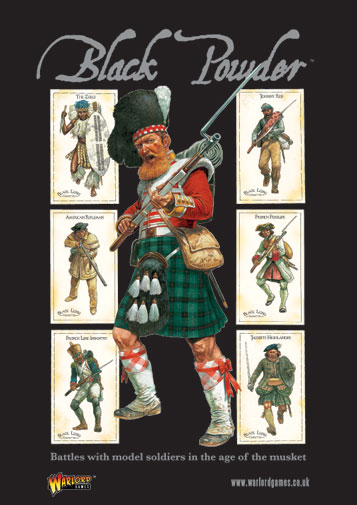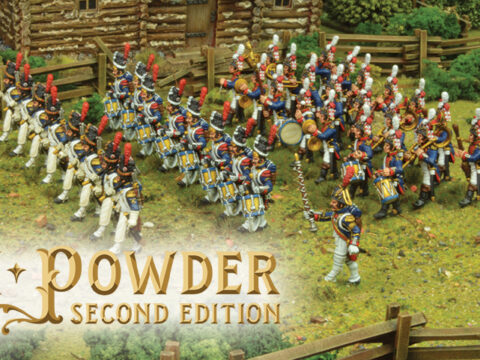The tactics of the Austrian army was to be modified considerably to face the onslaught of the modern French army under Napoleon. In 1798 the army fought much like those in other forces at the time, in strict formation and stalwartly advancing towards the enemy. The light infantry were the exception to the rule for a time.
Wide reforms were needed, as the ruling body of the military was inadequate, and was stripped of their powers. Baron Karl Mack was made overall commander of the Austrian army, and he was keen to see change. One of his first acts was to reorganise the structure of the battalions, organising them into four battalions consisting of four companies. The problem he faced was that there was no corresponding officer training to help implement and guide these changes. By 1805 Baron Mack attempted to reorganise the infantry battalions but was unsuccessful. Confusion and lack of equipment meant the army was generally unprepared for change.
Under the auspicious guidance of Marks, who believed in order and strength, said:
“Unnecessary skirmishing can only be detrimental… a determined charge delivered in close order… will certainly result in victory with very few causalities”
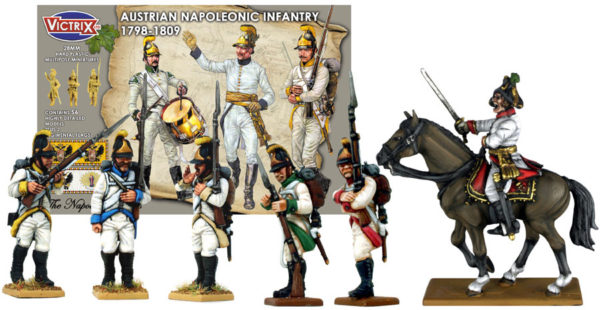
He wanted to readdress the formations by having the third line not fire at all, and abolished ceremonial manoeuvres which were still being performed on the battlefield, leaving them open to devastating fire or cavalry charges. The Austrian army during the early days of the wars were very dour and strict in a military sense, sticking with what they knew best. The third line was kept in place, but would then be allowed to go into skirmish order when the need arose. Two key differences were that the front rank could no longer be allowed to kneel and fire and target practice was limited to just ten rounds a man on an annual basis!
The Austrian way of war was a reflection of the times. Each formation was rigid in its set up and execution, with the key tactic of defence playing the major part in any engagement. Skirmishers were not seen as a viable unit, with the standard infantry fighting in very close formation, with the soldiers standing so close they were nose to backpack! There was even the arguably misguided belief that infantry could charge cavalry, as was the case in 1809 where the 14th Austrian Regiment charged the French cavalry head on!
Despite some questionable tactics the Austrian armies were headstrong, determined and courageous. The rigid military tactics they believed in would see them in good stead. One such instance was when the columns of the 17th Regiment advanced on the French positions, bands playing and songs whilst at the front were axe wielding sappers who sang whilst breaking down some of the French defences! During another engagement the 47th Regiment fought the French 18 Ligne, killing around 500 men in the streets of Aspern. Despite losing more battles than they won the dogged tenacity of the Austrian Army is an important factor of their fighting style.
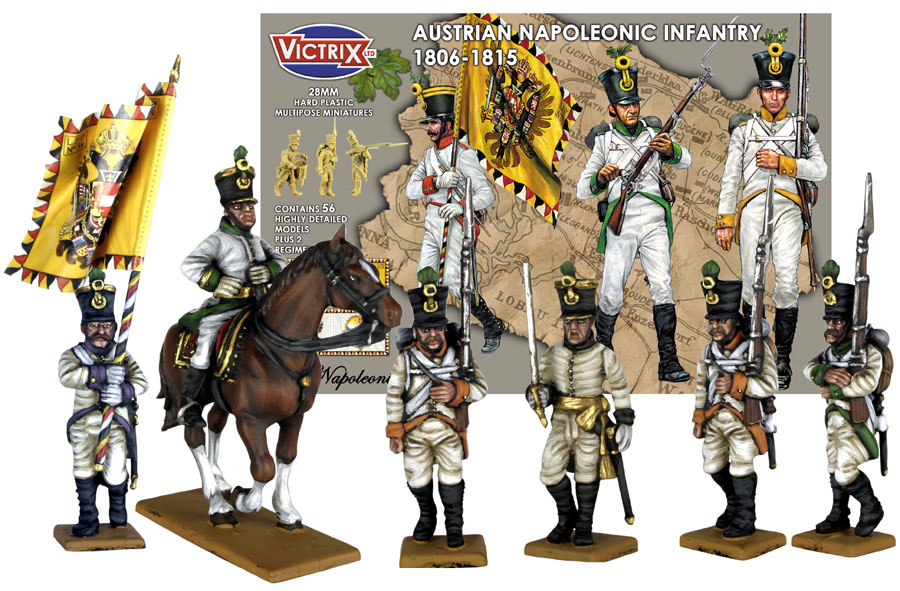
Grenadiers
The elite of the Austrian army, the Grenadiers were formed from the toughest and most physically fit men. The men who wished to join the ranks of this celebrated outfit had to match possess courage and have excellent marksmanship skills. They also had to undertake five years’ service. The men in the third line of the regular infantry were often picked for this role, with greater skills as skirmishers and marksmen, they were best suited to the job.
The grenadiers were mostly held in reserve, being utilised at key moment in a battle, stabilising the line or used as heavy shock troops to punch through a weakened enemy.
With the widespread reforms occurring at the time, the skirmishing tactic was abolished. This did not sit well with the battalions, and was not a rule that stayed for much longer, with the grenadiers being one of the first to break this change. The assault force specialised in bayonet use, and was rightly feared by the French armies.
In 1809, the French Young Guard and the Guard Tirailleurs was ordered to recapture the village of Essling from the dug in grenadiers stationed there. Whilst the French managed to push them out of the village, the ensuing fight would see a quarter of the French forces killed or wounded, such was the fearsome reputation of the Austrian grenadiers.
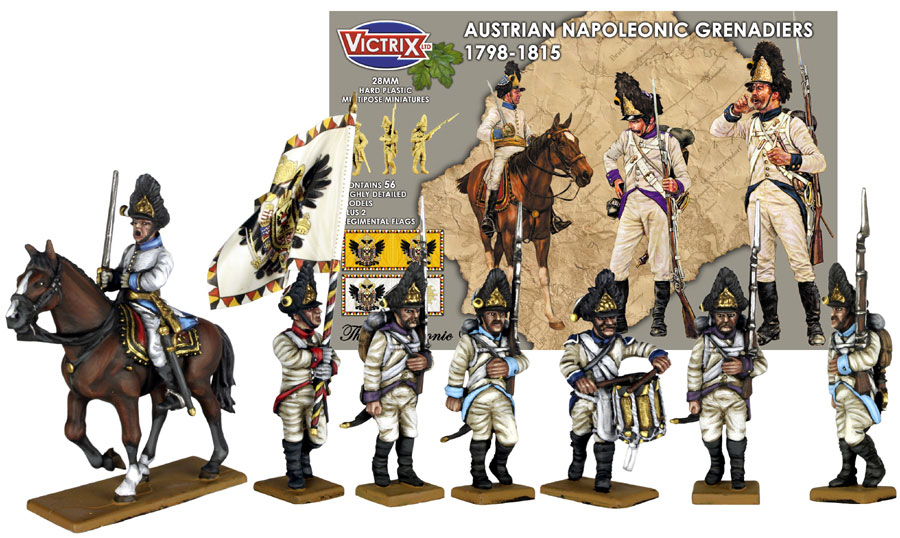
Landwehr
Formed in the 16th century and made up from all able bodied men in times of need, the Landwehr was to compliment the regular infantry, but were conscripted from the regular population. The unit was only made a part of the army by Imperial Decree in 1809.
Each man aged 21-32 had to serve one year of an unpaid term, in which they had to pay for their own equipment. Scores of people were conscripted into the ranks, so much so that many were later transferred into either local militia units, direct into the army or held in reserve. Those over the age of 32 were automatically enlisted into the militia regiments. The uniform was vastly different to the rest of the army, having each man dressed in a uniform based on local attire, making them a very distinct looking unit. The uniform was considered more comfortable than the regular infantry and was easier to manoeuvre about in.
The role of the Landwehr was to support the army but also to protect garrisons, land and property, freeing up regular infantry units would then be free to be placed on campaign. By 1809 the unit was disbanded, having proved not to be very good, due to being supplied with poor equipment and badly maintained weapons.
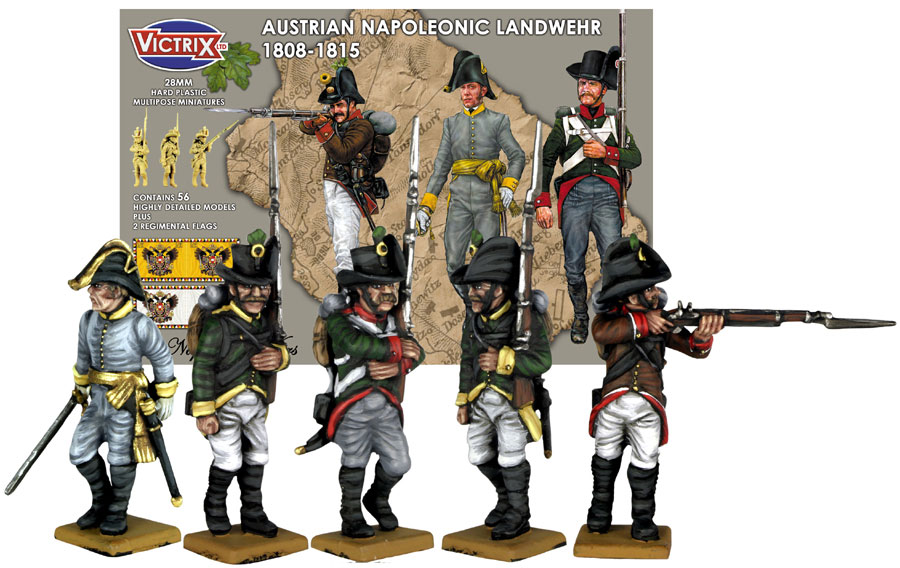
If you’ve not yet explored the Napoleonic Wars, now is the time! – Head over to our webstore and have a look through the Black Powder section for some inspiration!
